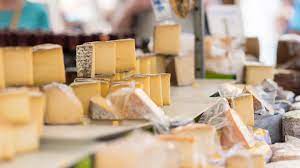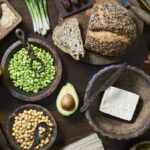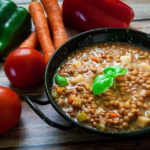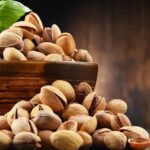Cheese is much more loved than hated in Spain: just under 20% admit that they do not eat it because they do not like its taste, and another 19% do not eat it because they are concerned about its fat or cholesterol content, according to the Study of the perception environment of cheese of Spanish origin prepared by the Interprofessional Dairy Industry (INLAC). Even with those, in Spain an average of 7.49 kilos per year is consumed, according to the last Food Consumption Report.
Cheese consumption has increased by 37% in the last two years, with cured cheese being the favorite of middle-aged Spaniards. Young people, on the other hand, prefer fresher cheeses. All of them prefer to buy them in supermarkets (74%). This would explain why the cheese sections have not stopped growing. In the Mercadona section we find an indisputable variety, from the most intense cheeses such as Queso Viejo de Leche Cruda de Oveja, one of the stars of Hacendado, to other softer cheeses such as Queso Provolone.
In between, the range of possibilities is almost infinite and there are many who will now celebrate the return of one of the most coveted snacks for gourmets and pastry lovers. We are talking about Hacendado Mascarpone Cheese, one of the products that the chain recommends for making desserts because of its “smooth and creamy” texture. However, it would be a mistake to relegate this delicacy only to the traditional tiramisu, not only for its versatility, but also for its healthy qualities.
Mercadona now gives us two options to enjoy this cheese. On the one hand, a 250-gram tub that is priced at 2.55 euros, and on the other a second 500-gram container that comes out for 4.40 euros. In its list of ingredients, this type of fresh cheese is made with pasteurized cream from Spanish cows and citric acid to correct the acidity. It is manufactured by Quesería Lafuente, based in the Cantabrian town of Heras, which is in charge of its production and they recommend that it be kept at a temperature between 0 and 8 degrees.
Hacendado Mascarpone Cheese is considered a good processed cheese as it is made from cow’s milk and cream. Its labeling lists the nutritional information per 100 grams of product, showing a total of 495 calories and 50 grams of fat, of which 37 grams are saturated fats, responsible for its consistency and satiating power. At this point, it is worth remembering that this type of lipids are not inadvisable if they come from dairy products and even the evidence tells us that, taken in moderation, they can be healthy.
Continuing with the list of nutrients, Mercadona’s mascarpone provides 5.3 grams of carbohydrates, of which 5.1 grams are naturally present sugars, also highlighting its 6 grams of good quality protein, with all the essential amino acids. Finally, they note that it is low in salt, accounting for only 0.11 grams of its composition. It is also rich in vitamin C, B vitamins and minerals such as potassium, phosphorus and, of course, calcium.
The downside? The calories
This cheese, described as curd cheese, is made in much the same way as yogurt. Thus, after adding the bacteria culture to the cream, it is gently heated and allowed to thicken, which is why it is particularly delicate and recommended to be eaten fresh because it spoils easily. The but we could put is that it is a highly caloric food that we should not abuse, reaching about 500 calories per 100 grams of product and 50% fat.
How to eat mascarpone
Mascarpone is one of the typical cheeses of northern Italy. In total, the country has more than 450 varieties of cheese and more than 2,500 interpretations of them, a real paradise. In this case, it originates from the Lombardy region and has a special label that distinguishes it as a Traditional Regional Food Product as it dates back to the 17th century in Abbiategrasso and Lodi. Although it is a food similar to cream cheese in consistency, if we get exquisite it would not really be a cheese at all, but the result of adding the bacteria culture to the cream extracted from the milk with which the famous Parmesan is made.
We have already mentioned one of the magic words when it comes to mascarpone: tiramisu. That Italian dessert that is replicated in the menus of restaurants all over the world, with versions of its amounts of coffee, sponge cake, sugar, cocoa powder and Amaretto liqueur. However, in Cocinillas they have gone beyond the classic and highlight, in addition to this traditional recipe, other savory preparations such as tagliatelle with truffle and ham or endives with salmon and cheese cream and even a tomato soup.













